Galileo Galilei’s birthday is not usually a cause for elementary school celebrations – but that could change if publisher Great Minds has anything to say about it.
At Saville Elementary School in Dayton, Ohio, third graders are learning quite a lot about the Italian astronomer and father of modern science as they kick off a module on Outer Space in Wit & Wisdom’s new ELA curriculum by reading Peter Sis’s Caldecott Medal winning book Starry Messenger.
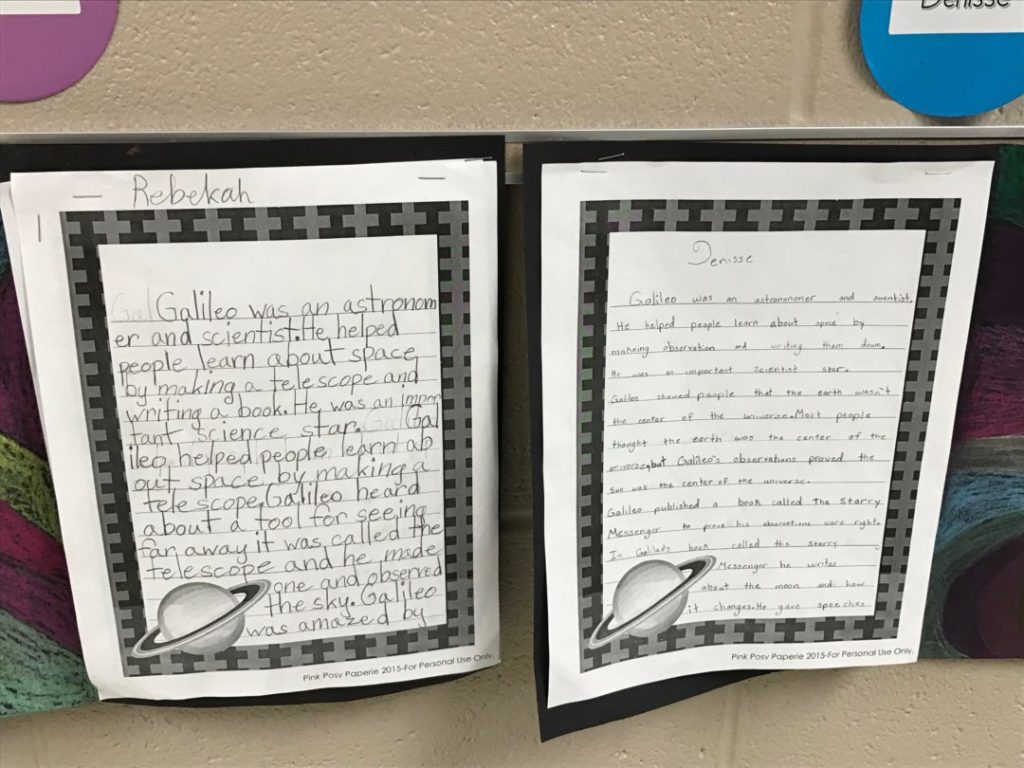
Our tour guide for this fifth stop on the Knowledge Matters School Tour, Mad River School District Instructional Coach Mandy Polen, had no way of knowing that our visit was going to fall on such a special day. As it turned out, we were treated to a wonderfully rich Socratic Seminar on the virtues of the space race, a culminating activity for the module that began six weeks ago with Galileo and, during the intervening weeks, had students read Brian Floca’s Moonshot and Robert Burleigh’s One Giant Leap (both award winners) while exploring a NASA video, mixed media fine art, sculpture, JFK speeches, and more.
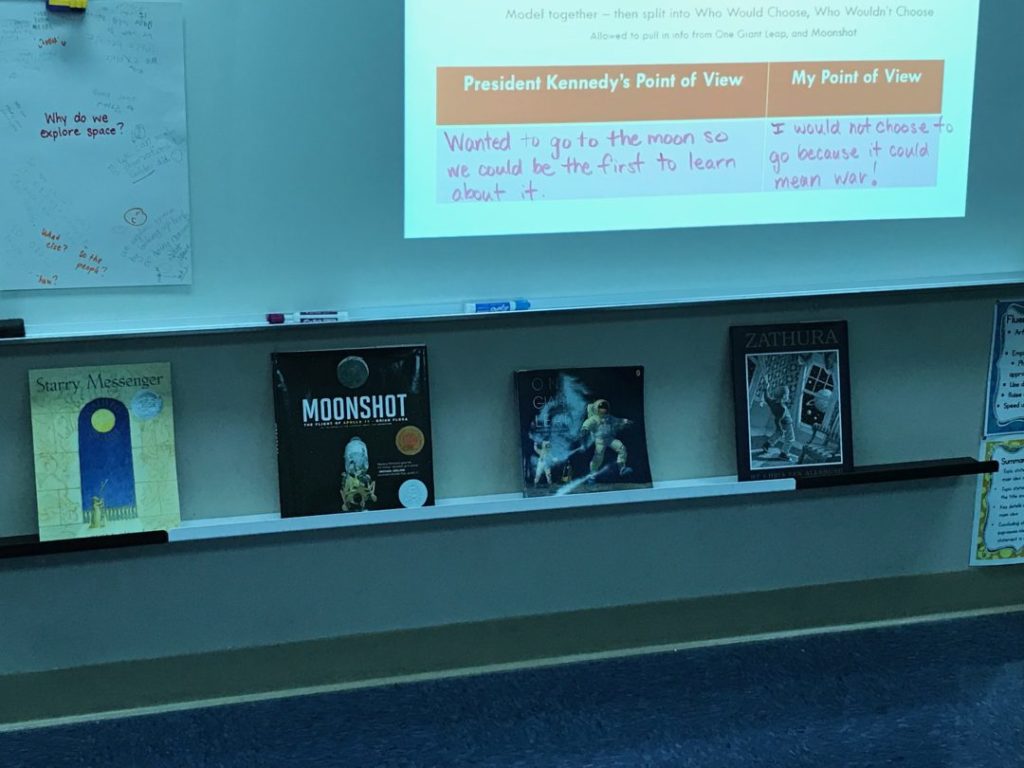
Student Achievement Partners’ David Liben accompanied me on this visit to Dayton. At the conclusion of their seminar, Liben told the students about how Sputnik had launched a massive debate within policy circles about the lack of rigor in the American education system, with some camps feeling students should be pushed to tackle more demanding topics earlier in their school career and others arguing it wasn’t developmentally appropriate. “That’s just offensive,” one little girl immediately offered. “I love proving people wrong,” chimed in another. Galileo would have been proud.
Katie Luedke has been at Saville her entire teaching career – 15 years. She’s mostly taught first and second grade. It was when she moved to third grade, looping with some of the kids she had two years earlier in the first grade, that her passion for curriculum reform reached its peak. That was when she really saw the effects of not having a consistent curriculum.
“They couldn’t look at a passage and understand it,” Luedke said, describing a lack of “connection to what they’re reading”, insufficient vocabulary, and little knowledge of the world.
The teachers at Saville are a singularly impressive lot. Katie herself has undergraduate and graduate degrees from the University of Dayton, one of the top teacher prep programs in the nation, and is National Board Certified. If anyone could write good curriculum, these folks could do it.
Katie became part of a group of teachers who concluded they had to abandon their strategy of “fixing” things here and there (in response to test scores) and embrace a unified curriculum. They had developed an antipathy for “the basal approach” and decided they wanted to do something really different. What led them to Wit and Wisdom were the books.
It’s hard not to love the books that make up the Wit and Wisdom curriculum. Each of four modules in the school year is comprised of a curated collection of literary and informational texts Great Minds calls “beautiful inside and out,” as well as speeches, interviews, music, visual art, film, and more. The texts were intentionally selected to serve as both “mirrors and windows” – that is, they provide opportunities for students to see themselves reflected in the texts and also to open up for students a knowledge of the world and the world of ideas.

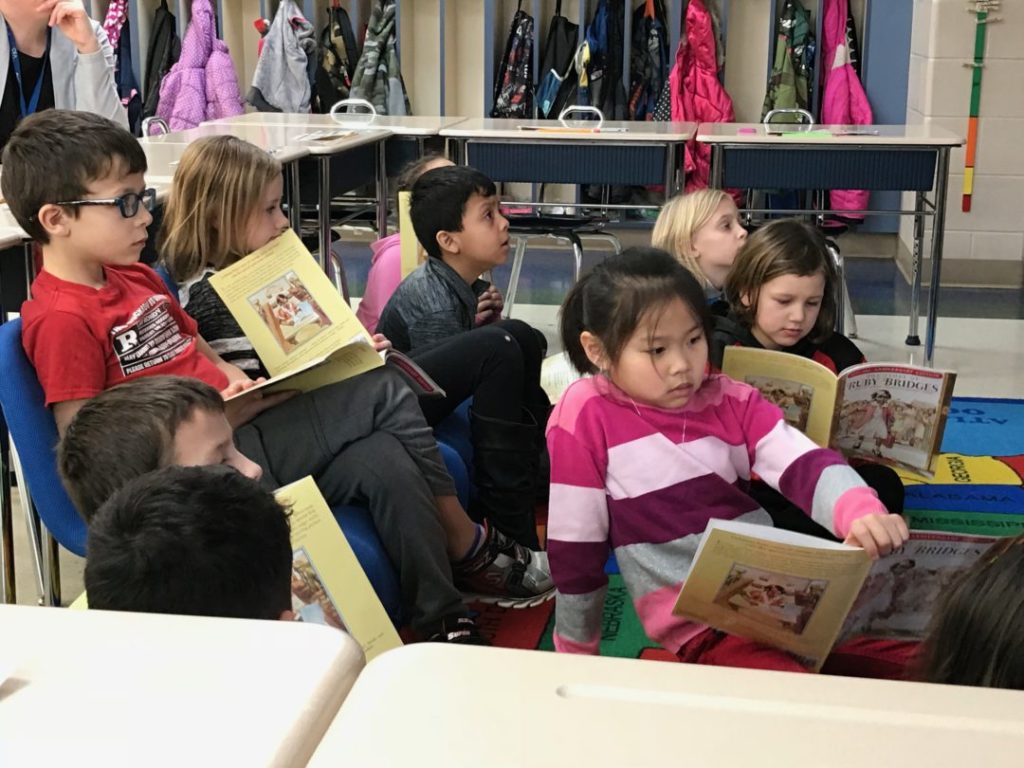
As we moved around the school — first into a fourth grade class reading Gary Paulsen’s Hatchet as part of a module on “Extreme Settings,” then to a second grade class reading The Story of Ruby Bridges as part of a module on “Civil Rights Heroes,” and finally to a first grade class reading What Do You Do With a Tail Like This (another Caldecott winner), it was hard not to feel like we were in some elite private school. Yet Saville is anything but. It’s a district school in a Rust-Belt city plagued by the all-too familiar problems of generational poverty: families torn apart by drug addiction, homelessness, and irregular employment.
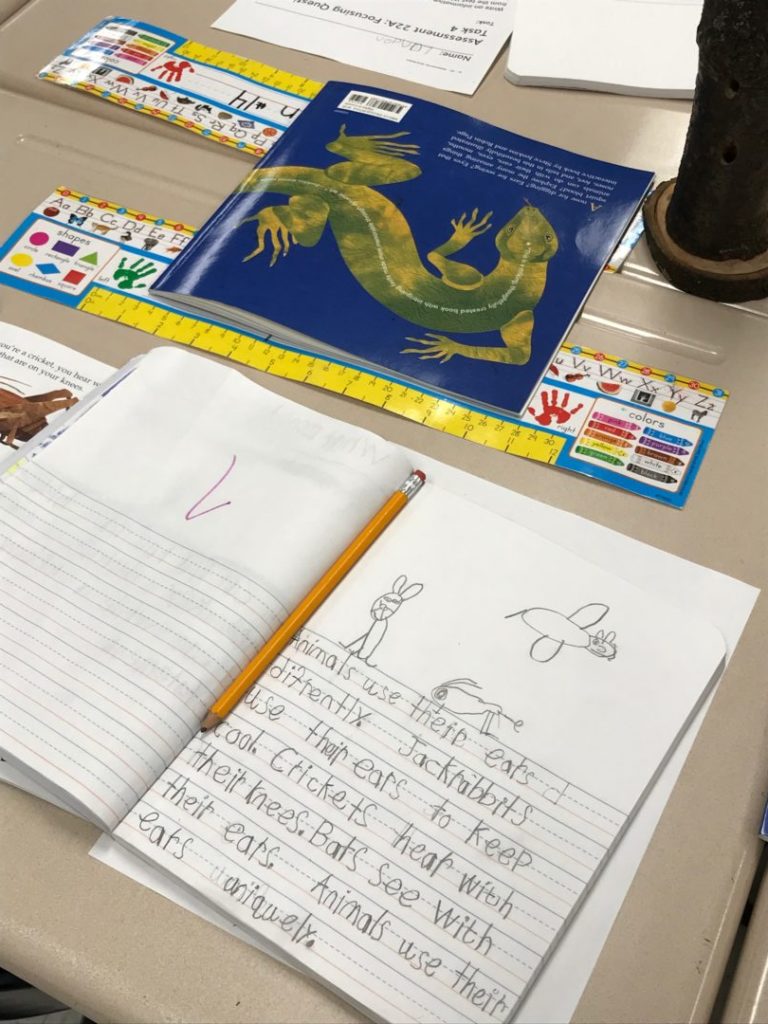
The teachers at Saville get pretty emotional when they talk about what Wit and Wisdom is providing their children. “They will have this for the rest of their lives,” Katie tells us.
Andrea Rastatter, principal at neighboring Brantwood Elementary (in its first year of implementing the curriculum), describes a 4th grade girl who “has completely come alive this year.” She persistently performed below grade level, rarely talked in class, and generally “sat stone faced.” While Andrea is certain the content is a big part of what’s turned her on, she says, “She’s a different child in the building because of her connections. It’s huge that she gets to read the same book others are.”
As with the other high-quality curricula we’ve witnessed on display across our School Tour, Wit and Wisdom places a profound importance on all students reading grade level texts. The way in which the texts are explored and mined allows for a variety of points of entry according to the teachers we talked to. And all kids aren’t just reading the text; they’re participating in discussions, writing activities, etc.
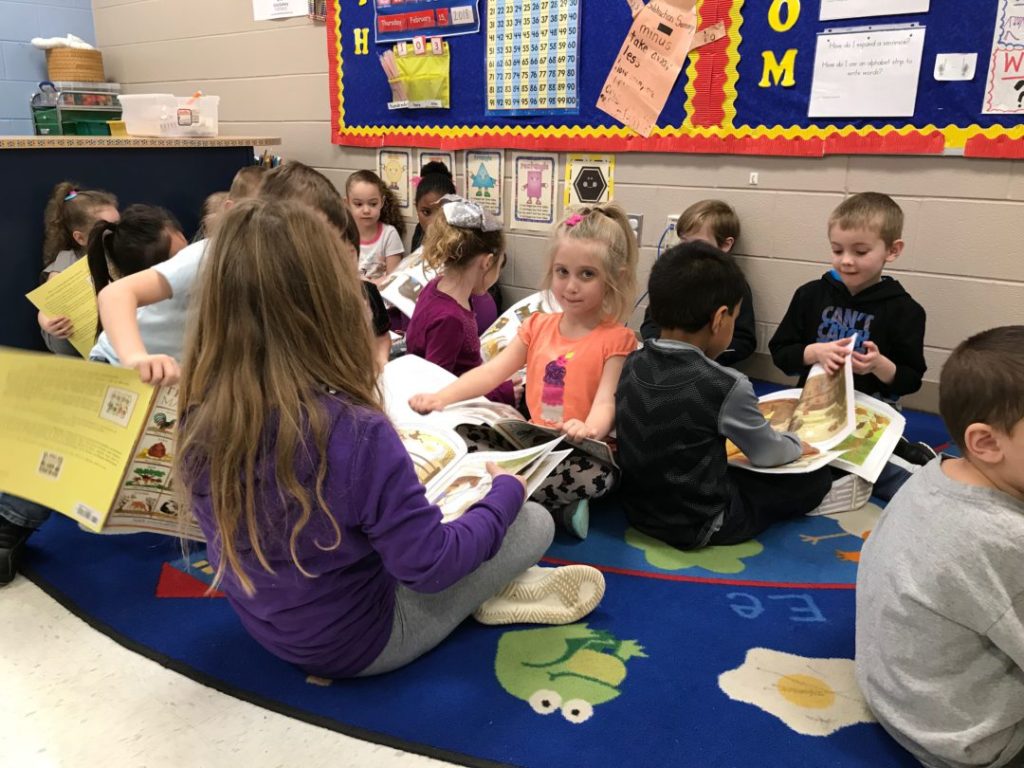
The abundance of stories from teachers about how motivated weak readers have become, and how much better those kids feel about themselves as a result of being included in reading the core texts and doing the work of the unit, is – without question – a summative finding of the Knowledge Matters School Tour. Too many curricula have deprived weak readers of rich content and shared learning by limiting them to texts “at their level.” More on this to come.
The teachers we talked to in Dayton are passionate about how the curriculum has impacted them personally. “I don’t say this lightly”, says 15-year teacher Molly Jones at neighboring Mad River Middle School, “Wit and Wisdom has been career-changing; it’s made me see how I teach and why I teach in a very different way.” Krystle Gleason adds, “I could never go back to what we did before because now I’ve seen how beautifully it can be pulled together.”
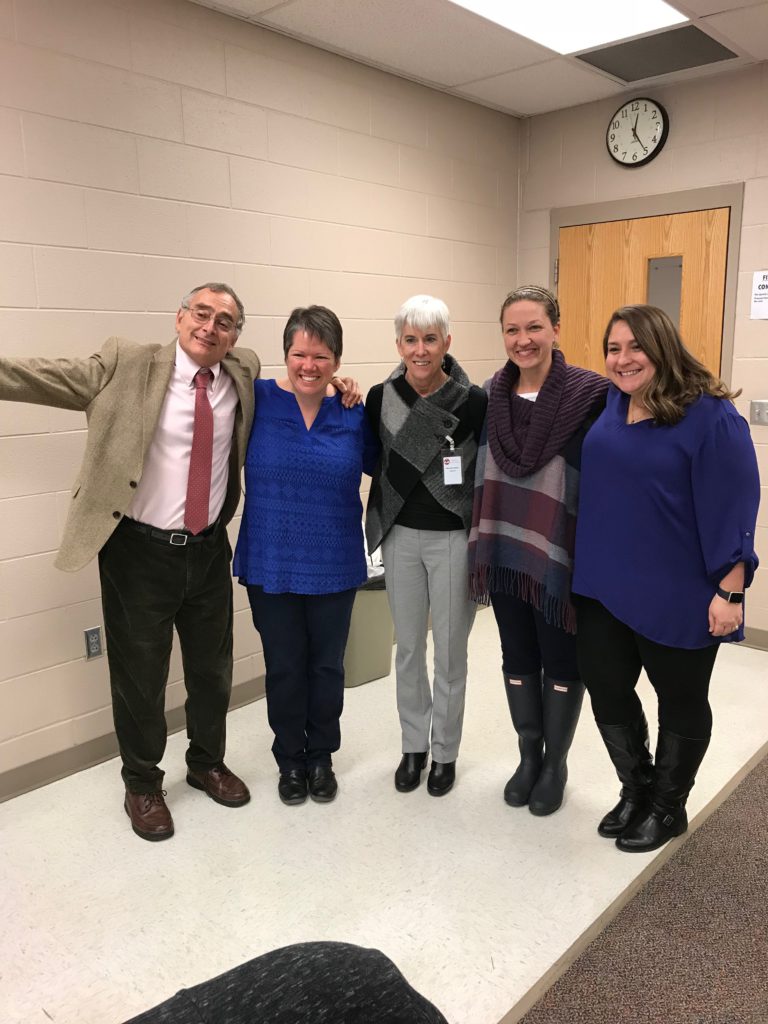
Click to Share the Tweets Below!
- Spread the word about the #KnowledgeMatters School Tour in @The74 and check out the website at http://knowledgematterscampaign.org/school-tour/
- The teachers we talked to at Saville Elementary are passionate about how the @WitWisdomELA curriculum has impacted them and their students—learn why at: #KnowledgeMatters
- The @WitWisdomELA #curriculum being used at Saville Elementary provides opportunities for #students to see themselves reflected in the texts and also to open up for students a #knowledge of the world and the world of ideas.
- At Saville Elementary School in Dayton, Ohio, #students are getting turned on to knowledge thanks to a strong #curriculum from @GreatMindsEd—read about our #school visit here: #KnowledgeMatters
The Author
Barbara Davidson is President of StandardsWork and runs the Knowledge Matters Campaign. A former classroom teacher of students with learning disabilities, she has worked for the past 30 years at the intersection of education policy and practice and has led a number of curriculum development efforts.